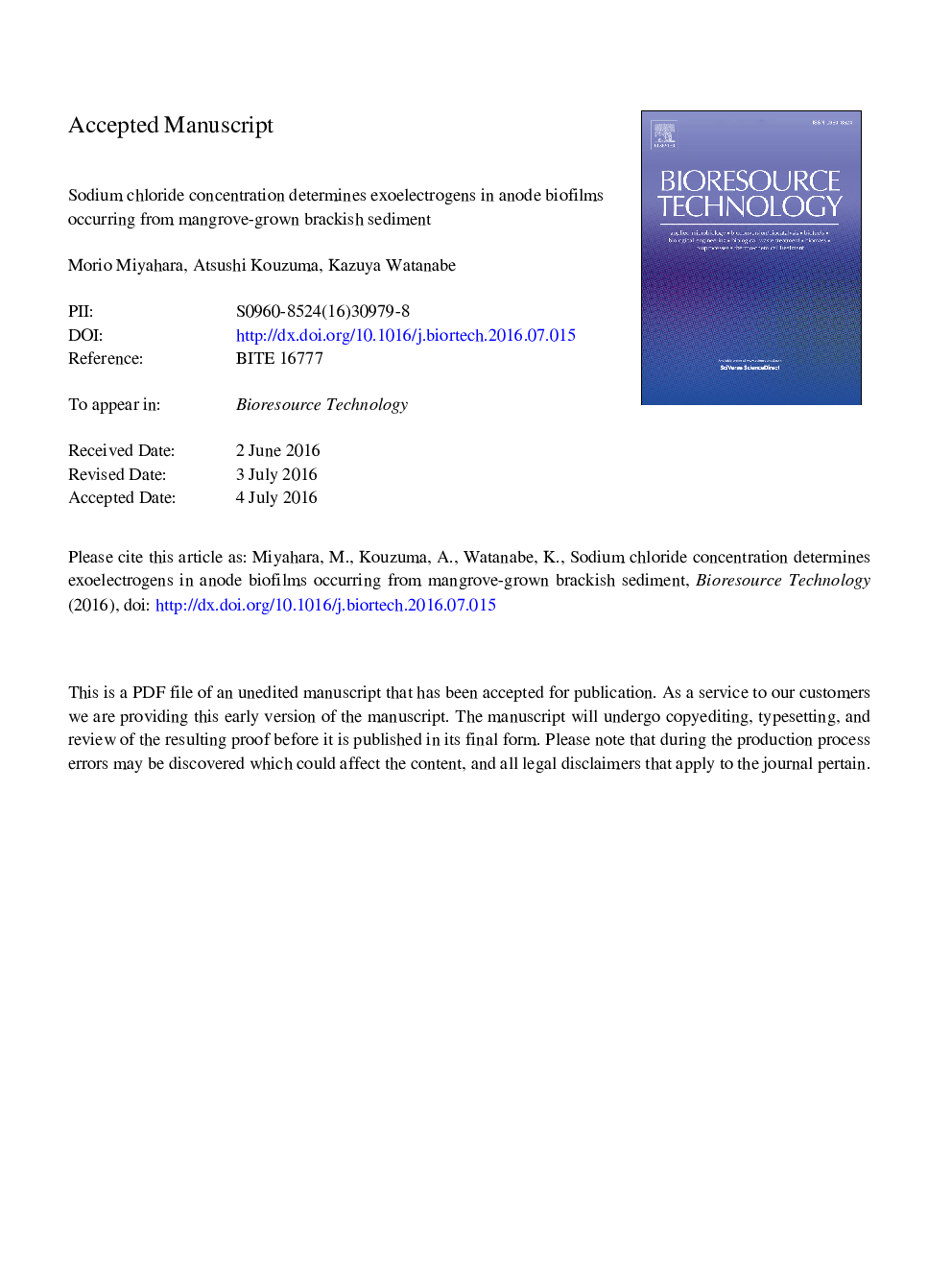| Article ID | Journal | Published Year | Pages | File Type |
|---|---|---|---|---|
| 7070338 | Bioresource Technology | 2016 | 23 Pages |
Abstract
Single-chamber microbial fuel cells (MFCs) were inoculated with mangrove-grown brackish sediment (MBS) and continuously supplied with an acetate medium containing different concentrations of NaCl (0-1.8Â M). Different from MFCs inoculated with paddy-field soil (high power outputs were observed between 0.05 and 0.1Â M), power outputs from MBS-MFCs were high at NaCl concentrations from 0 to 0.6Â M. Amplicon-sequence analyses of anode biofilms suggest that different exoelectrogens occurred from MBS depending on NaCl concentrations; Geobacter occurred abundantly below 0.1Â M, whereas Desulfuromonas was abundant from 0.3Â M to 0.6Â M. These results suggest that NaCl concentration is the major determinant of exoelectrogens that occur in anode biofilms from MBS. It is also suggested that MBS is a potent source of microbes for MFCs to be operated in a wide range of NaCl concentrations.
Related Topics
Physical Sciences and Engineering
Chemical Engineering
Process Chemistry and Technology
Authors
Morio Miyahara, Atsushi Kouzuma, Kazuya Watanabe,
